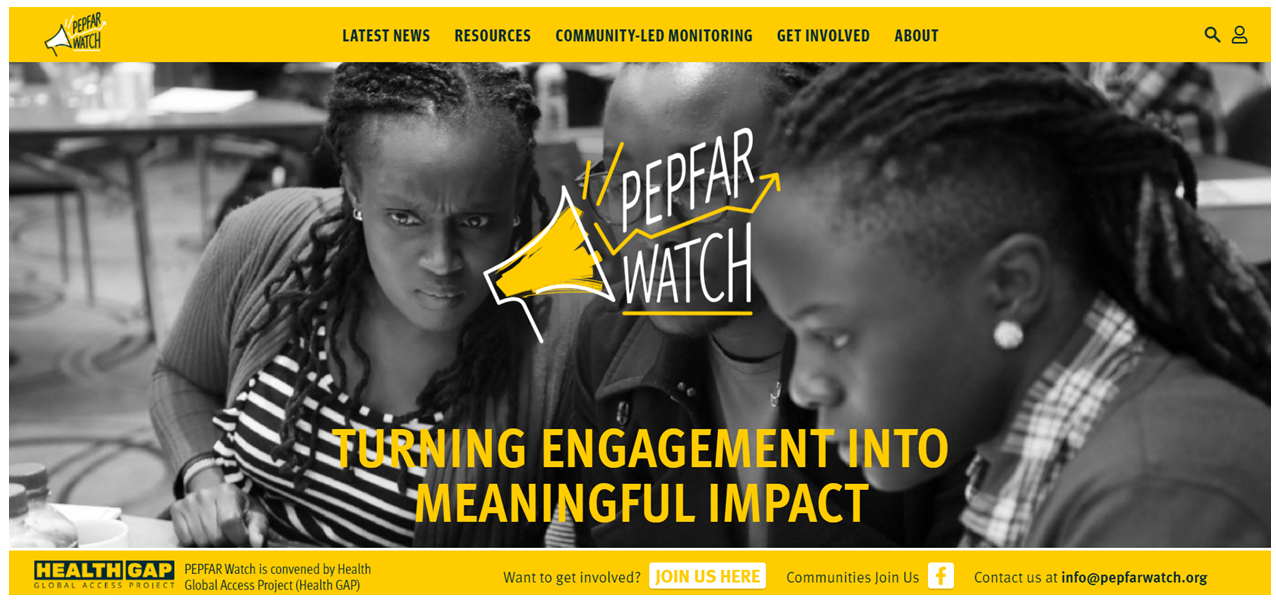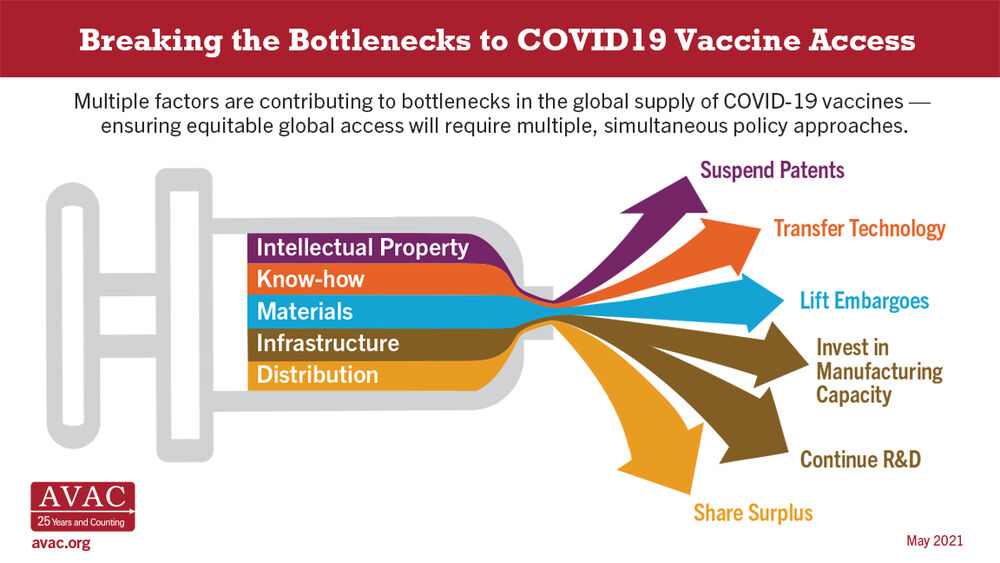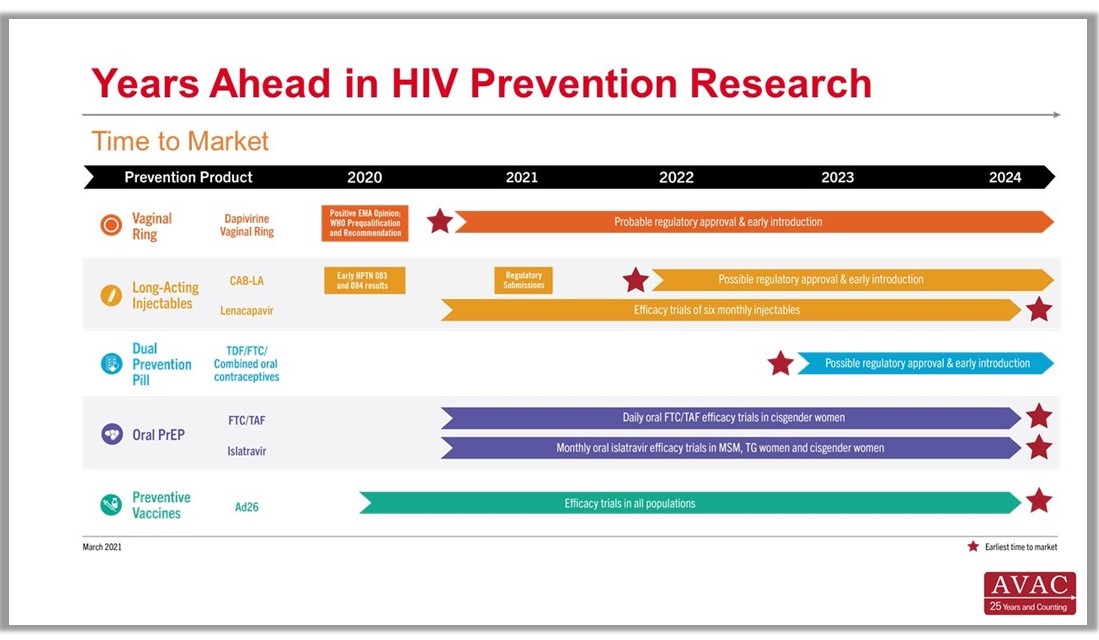Mitchell Warren is AVAC’s Executive Director. This piece first appeared on Science Speaks.
In February 2020, just as the COVID pandemic began its rapid global spread, a major HIV vaccine trial called HVTN 702, or Uhambo, was halted for lack of efficacy. Researchers and advocates had high hopes for Uhambo, building as it did on the RV144 trial, which provided the first evidence that an HIV vaccine could create a partially protective immune response. But Uhambo, like several studies before it, ended in disappointment.
On the same day that Uhambo ended, efforts to develop a vaccine against COVID-19, a disease that much of the world had yet to even hear about, were rapidly taking shape. In less than a year, the unprecedented global response to COVID produced multiple, highly effective vaccines. Yet the Uhambo researchers, in publishing their results last week in the New England Journal of Medicine, were obliged to remind the world that, nearly 40 years after the identification of HIV, there is still no AIDS vaccine:
“The high HIV-1 incidence that we observed in our trial illustrates the unrelenting aspect of the epidemic, especially among young women,” they wrote. “More than ever, an effective vaccine to prevent HIV-1 acquisition in diverse populations is needed.”
The Uhambo researchers are right: the need for an HIV vaccine could not be clearer. And the COVID-19 experience provides an important new roadmap for how to get one.
First, it’s critical to acknowledge that COVID vaccines exist because of decades of investments and advances in HIV vaccine research. HIV vaccine researchers and research networks led the scientific effort; HIV funding networks, scientific collaborations and clinical trial infrastructure sped COVID vaccine development; years of effort by HIV researchers to understand human immune responses guided the effort; vaccine platforms such as mRNA and Adeno26, developed and advanced through HIV vaccine studies, were repurposed for COVID prevention; and community advocates provided the expertise that helped enroll massive clinical trials and guide COVID vaccines through global regulatory processes.
So why do we have several effective COVID vaccines today, and none for HIV?
The clearest, most direct answer is that the scientific challenge of developing an HIV vaccine is much greater than it was for COVID. SARS CoV-2 is a relatively simple virus. HIV’s rapid mutations and capacity to evade natural immunity make it the most complex viral target ever encountered.
While the scientific challenges of HIV vaccine research are clear, however, so too is ample evidence from the COVID experience of what is possible. Simply put, the world is better positioned today than ever before to develop an HIV vaccine — if the HIV research effort can build on the COVID experience the way that COVID built on HIV.
Step one: we need a global effort to replicate the unprecedented level of funding, coordination, scientific collaboration and global political will that guided the fast-track development of COVID vaccines. With COVID, billions of dollars in research funding materialized overnight. Academic researchers, pharmaceutical executives and political leaders made the vaccine a priority, identifying and addressing obstacles to success in real-time. The result: there have been more large-scale COVID efficacy trials in one year than in more than 30 years of HIV vaccine research.
Next, financial investments were committed in advance of scientific answers, accelerating every stage of the COVID vaccine research process and condensing the gaps between each critical step from years to days. By contrast, it took seven years from getting the results of the RV144 trial before HVTN 702 even began.
Then, HIV vaccine research must move more rapidly to incorporate the latest scientific discoveries — from the COVID vaccine effort, and from other fields of study.
The cutting-edge mRNA technology used in several successful COVID vaccines, for example, holds great promise for HIV vaccine research. At the recent Conference on Retroviruses and Opportunistic Infections, the US National Institutes of Health and Moderna scientists presented initial data that an mRNA vaccine protected monkeys against HIV-like virus.
Two large studies of the Janssen Adeno26 HIV vaccine candidate, using another platform that was successfully employed against COVID, are also underway. When they report results, the field must be prepared to act on those findings with the same urgency, as well as the political and financial will that defined the COVID vaccine effort.
Studies that do not produce new prevention products, such as HVTN 702 and the recent Antibody Mediated Prevention (AMP) trial, can also offer critical insights into the type of immune responses that can provide durable protection against HIV, and can feed critically important data into a faster, more dynamic HIV vaccine effort.
Finally, planning for success must be the new normal. In this respect, the HIV vaccine effort can learn from COVID’s failures as well as its successes. Products don’t end epidemics; programs that deliver equitably and at scale do.
The infrastructure and urgency to manufacture and distribute COVID vaccines to translate great science into actual public health impact for all continues to lag tragically far behind research efforts, creating a bumpy rollout, vaccine shortages and significant equity issues. Avoiding the same mistakes for HIV will require expanding and sustaining current investments in vaccine manufacturing and distribution, and strengthening efforts to ensure that community leaders are integrally involved in efforts to introduce and ensure access to successful HIV vaccines.
The persistently high rates of new HIV infections among participants in the Uhambo and AMP studies are stark reminders that developing an HIV vaccine is critical. The COVID vaccine experience provides critical, real-world examples of how to get it done.



